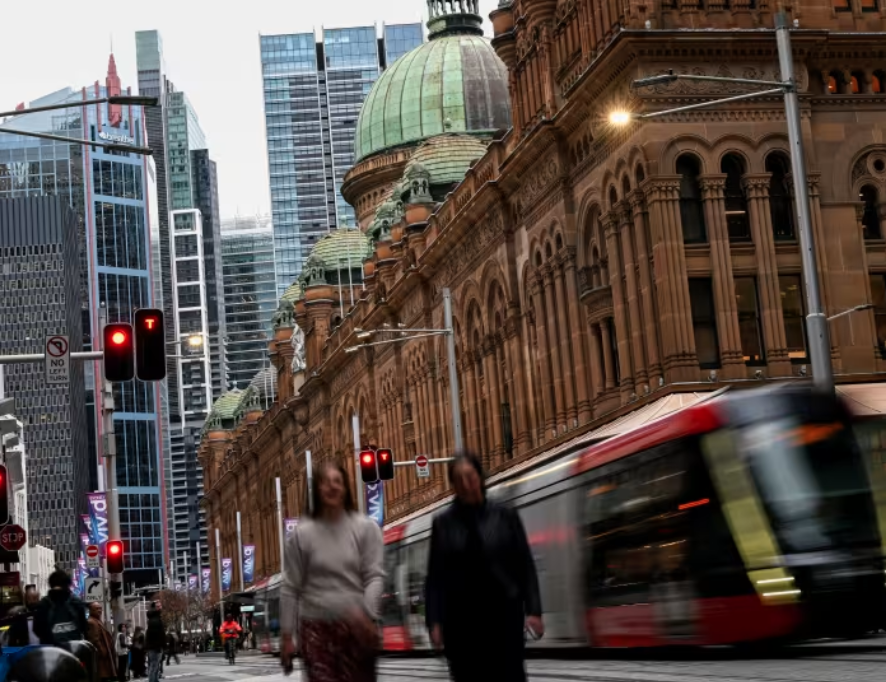The Latest Trend in Your Work Wardrobe Stinks
Performance fabrics move from workout gear to business attire—with some odorous downsides
Performance fabrics are moving out of the gym and into everyday clothes. Some men say that stinks.
The fabrics, usually a blend of polyester, spandex and other man-made fibres, have been a mainstay in workout gear for their sweat-wicking properties. Now apparel makers are using them for polo shirts, button-ups and suits. But a work day or wedding lasts a lot longer than a workout, giving the materials time to trap odours, cause breakouts and make you sweatier.
Tim Connon, a life insurance agent in Palmer, Tenn., got tired of adding a cup of baking soda to the wash to remove the mildew smell from his polyester-blend polo shirts, and eventually tossed them out. “It was ridiculous to have to take that extra step when the shirts shouldn’t smell in the first place,” he said.
Connon now wears only 100% cotton shirts, but said they are hard to find and more expensive. They also have to be ironed. “The performance shirts don’t wrinkle, but I couldn’t stand the smell and the itchiness of those fabrics,” the 31-year-old said.
Synthetic fibers repel water, which helps sweat evaporate but allows oil secretions from our bodies to build up on the fabric and trap odours, according to Renae Fossum, a senior director and research fellow at Procter & Gamble.
P&G has upgraded its detergents and introduced new products like Downy Rinse & Refresh, a fabric enhancer that works in the rinse cycle to strip away odours and residue that builds up on synthetic clothes. “We are trying to help consumers understand these issues are not in their head,” said Sammy Wang, a P&G senior scientist who specialises in fabric care.
Polyester is no stranger to friction. The fibre got its start in the 1930s lab of DuPont chemist Wallace Carothers. After Carothers got sidetracked by the discovery of nylon, British scientists picked up the thread and developed the first polyester fibre during World War II. DuPont bought the U.S. rights in 1946.
In the following decades, the fabric elbowed aside natural fibres like cotton, silk, linen and wool, thanks to its lower costs and easy care—you could throw it in the washing machine and let it drip-dry.
It was also suffocating, at least in its earlier forms. Wearing a 1970s polyester leisure suit was like “walking around in a Hefty bag,” said Alan Spielvogel, director of technical services at the National Cleaners Association, a dry cleaners trade group.
Clothing makers eventually added breathability, stretch, waterproofing and stain resistance. As athleisure took hold, polyester took off. Polyester surpassed cotton in 2002 and now outsells all other fibres, according to consulting firm Wood Mackenzie.
Covid further fuelled polyester’s growth as people got used to wearing more comfortable clothes while stuck at home.
Although women have adopted performance fabrics for dressier attire, men have been the primary driver of demand because they tend to put a higher value on features like stain and wrinkle resistance, said Kristen Classi-Zummo, an apparel analyst at market research firm Circana.
Dermatologists say that with the popularity of these fabrics, they are seeing a jump in “sweat acne,” which is caused by a yeast that lives on our skin that invades our pores when we perspire.
Erum Ilyas, a dermatologist in King of Prussia, Pa., said sweat acne is more prevalent with performance fabrics in casual or work attire than workout clothes. “When you work out, you usually rinse off afterward,” she said. “If you are wearing a shirt for 8 to 12 hours, you are stuck in that fabric for longer stretches of time.”
She tells patients to try using Head & Shoulders shampoo as a body wash to degrease the skin.
Tyler Cenname, the co-founder of a furniture company, purposely chose a dress shirt made of performance fabric to wear to a Las Vegas wedding in August because he thought it would keep him cooler.
“I actually sweated more than if I was wearing a cotton shirt,” the 24-year-old said. “And I broke out in a rash.”
Zach Klempf, the founder of an automotive software company, bought a moisture-wicking suit to keep him dry when presenting to clients and working trade show booths. He hadn’t counted on the suit absorbing cigar smoke during industry cocktail hours.
“I can’t wear it anymore, because the smell is so off-putting,” said the 32-year-old San Francisco resident. He’s gone back to wool suits.
Some performance-fabric fans say the odours are a small price to pay for the added comfort and absence of armpit stains. To combat the stink factor, some brands treat the fabrics with antimicrobial finishes.
That coating can wear off, according to Tony Anzovino, chief sourcing and merchandising officer at Haggar Clothing, which uses performance fabrics in 70% of its products. Instead, Haggar uses a type of polyester fibre that is spun into a longer yarn called a filament that makes it harder for microbes to attach.
Jonathan Poston, a 48-year-old consultant, who lives in Chapel Hill, N.C., wonders if we’re asking too much of our clothes. “In the tech world we call it feature creep,” he said. “The same thing is happening with clothes. They have to tick all these boxes.” He only wears 100% cotton shirts.
“As someone who has to wear a shirt for 14 hours a day, I don’t think it’s unreasonable to ask my clothes to do a lot,” said Ben Perkins, the co-founder of &Collar, a men’s clothing brand that uses performance fabrics. Nevertheless, Perkins plans to introduce a cotton-blend shirt after customers said they wanted one.
“You need to serve the synthetic majority and the cotton minority,” he said.
 Copyright 2020, Dow Jones & Company, Inc. All Rights Reserved Worldwide. LEARN MORE
Copyright 2020, Dow Jones & Company, Inc. All Rights Reserved Worldwide. LEARN MORE
This stylish family home combines a classic palette and finishes with a flexible floorplan
Just 55 minutes from Sydney, make this your creative getaway located in the majestic Hawkesbury region.
Excluding the Covid-19 pandemic period, annual growth was the lowest since 1992
Australia’s commodity-rich economy recorded its weakest growth momentum since the early 1990s in the second quarter, as consumers and businesses continued to feel the impact of high interest rates, with little expectation of a reprieve from the Reserve Bank of Australia in the near term.
The economy grew 0.2% in the second quarter from the first, with annual growth running at 1.0%, the Australian Bureau of Statistics said Wednesday. The results were in line with market expectations.
It was the 11th consecutive quarter of growth, although the economy slowed sharply over the year to June 30, the ABS said.
Excluding the Covid-19 pandemic period, annual growth was the lowest since 1992, the year that included a gradual recovery from a recession in 1991.
The economy remained in a deep per capita recession, with gross domestic product per capita falling 0.4% from the previous quarter, a sixth consecutive quarterly fall, the ABS said.
A big area of weakness in the economy was household spending, which fell 0.2% from the first quarter, detracting 0.1 percentage point from GDP growth.
On a yearly basis, consumption growth came in at just 0.5% in the second quarter, well below the 1.1% figure the RBA had expected, and was broad-based.
The soft growth report comes as the RBA continues to warn that inflation remains stubbornly high, ruling out near-term interest-rate cuts.
RBA Gov. Michele Bullock said last month that near-term rate cuts aren’t being considered.
Money markets have priced in a cut at the end of this year, while most economists expect that the RBA will stand pat until early 2025.
Treasurer Jim Chalmers has warned this week that high interest rates are “smashing the economy.”
Still, with income tax cuts delivered at the start of July, there are some expectations that consumers will be in a better position to spend in the third quarter, reviving the economy to some degree.
“Output has now grown at 0.2% for three consecutive quarters now. That leaves little doubt that the economy is growing well below potential,” said Abhijit Surya, economist at Capital Economics.
“But if activity does continue to disappoint, the RBA could well cut interest rates sooner,” Surya added.
Government spending rose 1.4% over the quarter, due in part to strength in social-benefits programs for health services, the ABS said.
This stylish family home combines a classic palette and finishes with a flexible floorplan
Just 55 minutes from Sydney, make this your creative getaway located in the majestic Hawkesbury region.






















